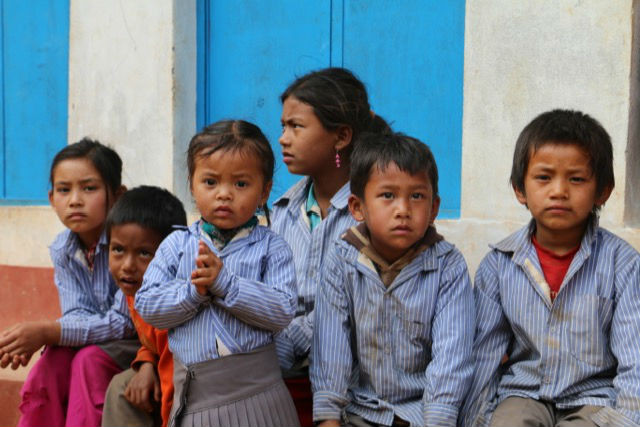Delano spoke to Aide à l’Enfance de l’Inde et Nepal (AEIN) executive director Françoise Binsfeld to find out more.
Jess Bauldry: How did AEIN get started?
Françoise Binsfeld: It was set up by a couple of Luxembourg parents who adopted a child from a home in Mumbai, “Daughters of the Cross”, 50 years ago. In the beginning, the support was dedicated to that one home. Slowly, financial support was extended to other areas and over the years it grew.
We started projects in Nepal in 1997. We counted around 650 projects we financed over 50 years.
What has changed in the charity sector in the last 50 years?
Now it’s getting more and more professional. We’ve a framework agreement with the ministry which is financing 80% of the projects. Also the reporting is increasing and we’re focusing more on impact outcomes. That can be challenging because we’re not just financing bricks. After the earthquake in Nepal we’re rebuilding a village of 54 private homes. But we’re also investing into people, and changing mindsets takes time and then building things up.

Françoise Binsfeld, pictured, joined the NGO as a volunteer in 2006. Photo: Maison Moderne
What developments are planned for the coming years?
The financial model will change for us after 2020. Recently, the government decide it wants to support more the least developed countries. Nepal is included, but not India. Financing will go down to 60%, unless we do advocacy projects. We’ve some projects like child marriage, which we’ve decided to go into Nepal with.
At the start of 2017 the charity changed its name to include Nepal. Why now?
We’ve been working there for 20 years but it wasn’t obvious. After the earthquakes, people said they didn’t know we were working in Nepal. After 50 years, we thought it was the opportunity to change the name. Our focus is still on children but with more integrated projects, so helping their mothers, women in the village and including education and health.
What are the main barriers you face in doing the work you do?
Emergency situations are a challenge for our partners in the field. Our reconstruction of houses in Nepal was delayed by one year. We were struggling with administrative issues and only started building in January this year.
Now, after 20 years, they will have their first elections. This will also have an impact on the projects because budgets will shift more to a local level. It’s a challenge for Nepal but it brings hope as well.

Visit of earthquake affected houses in Kavrepalanchowk district, Nepal. Photo: AEIN.
What keeps you coming back?
I keep doing it because we see our work has an impact and it’s important that people get help and support. The people we work with are very resistant to the difficulties. They have a smile on their faces and they want to continue and we need to support them.
The task is huge. Standing in a village where we are rebuilding 54 houses, you see there is so much to do and the monsoon comes in June. But the partners are motivated so we are motivated. It has to continue.
Disaster struck last year at your annual bazaar when the proceeds were stolen. What was the outcome of that?
That money was dedicated to reconstruction in Nepal. We filed a case with the police but they couldn’t find the culprit. Even a lawyer offered to represent us for free in court. We didn’t know how much had been raised because we hadn’t yet counted it.
In the end people donated money themselves and raised more or less the same figure we normally raise. This year we will take even more precautions. We have asked people to pay for their lunches in advance via bank transfer so we don’t carry so much cash.
Catch the celebrations this year
Support AEIN and find out more about their activities by attending their Indian and Nepalese culture celebration at the Tramsschapp in Limpertsberg on 13 May, starting 10:30am. Click here to find out more.
Activities include live dance performances, henna tattoo workshop, tribal art for children, photo booth with traditional Indian costumes, introduction to yoga and several stands selling hand-made items, Indian and Nepalese cuisine, not to mention the silent art sale.
AEIN, which is co-financed by the development ministry, employs three, full-time staff members. It currently funds 24 projects, of which 14 are India and 10 in Nepal and works with more than 50 project partners.
